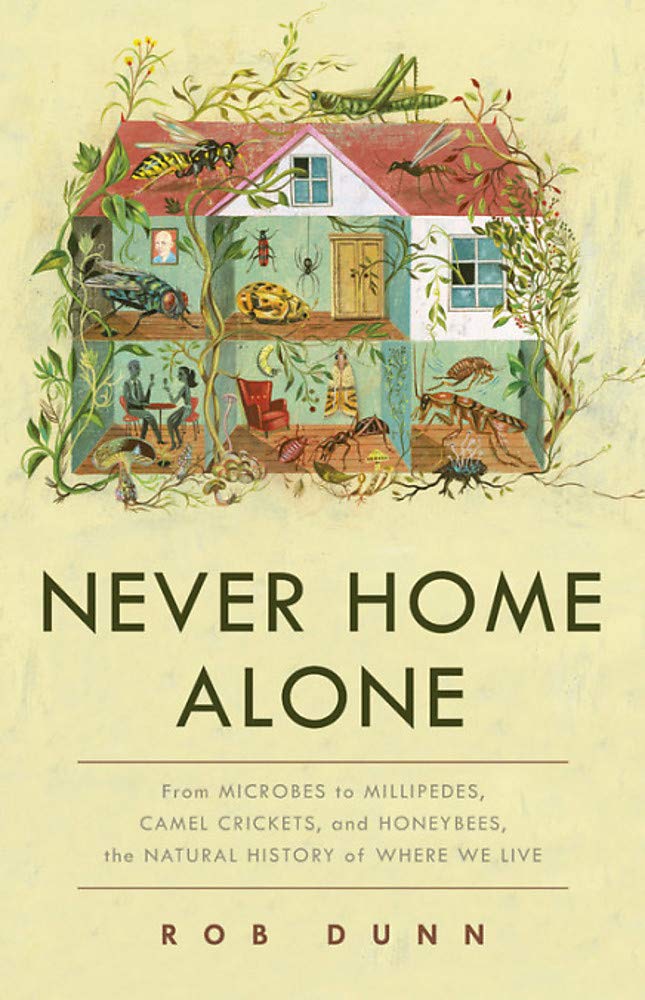
This book is chosen by Mark Bisset, executive director of the Couchiching Conservancy
In Never Home Alone, author Rob Dunn takes you on a domestic adventure that is as diverse in its ideas as the subject he tackles.
The sub-heading of the book is a tidy summary of the trip inside your home: “From microbes to millipedes, camel crickets, and honeybees, the natural history of where we live.”
There are illuminating surprises in the book, written with an airy approach that belies its underlying science. The biggest of these is the amazing absence of research about the critters with whom we share our lives. Drawn to the sexier venues of ecology like the deep tropical rain forests or the verdant life of wetlands, ecologists tend to ignore the ecosystems we are submersed in between the walls of our own homes.
You might be surprised to learn that some of the bugs in your basement are un-studied, unnamed, and perhaps even unknown to science.
Dunn, a professor in the department of applied ecology at North Carolina State University and in the Natural History Museum of Denmark at the University of Copenhagen, exploits that blind spot to the fullest in his research.
In addressing our squeamishness about the critters that have shared our homes and even our skin, he notes humans tend not to like other species that are successful. It’s an interesting thought in an era when conservation is largely focused on the eradication of invasive species to maintain some sort of unnatural ecological stasis based on the species we like.
Dunn concludes that we need to shed or at least reduce our collective fixation on pathogens and pay much more attention to the promotion of diverse healthy personal ecosystems that support our natural capacity to fight off the few bad microbes that exist amidst the uncounted beneficial species we have evolved with over time. He doesn’t diminish the important scientific discoveries that have delivered us from many of the diseases that plagued our ancestors. Instead he argues there is much more yet to learn and that our present picture is incomplete.
Noting the species in our homes are a measure of our lives, Dunn concludes: “I know what I want my dust to say about me – that I am living a life embedded in biodiversity, a life in which I spend as much time outside with my family as I do indoors, a life exposed to biodiversity’s grandeur and services, a life in which the species around me every day fill me with the sort of wonder the first microbiologist, Antony van Leeuwenhoek, felt.”
This is a book worth reading.
The book can be found at The Orillia Public Library. They have one copy. Also both ebook and hard copy forms may be purchased from Amazon, or if you prefer, by order from your local bookstore.
Thanks to Mark for the review and the Heather Ewing for information about how to obtain the book.
